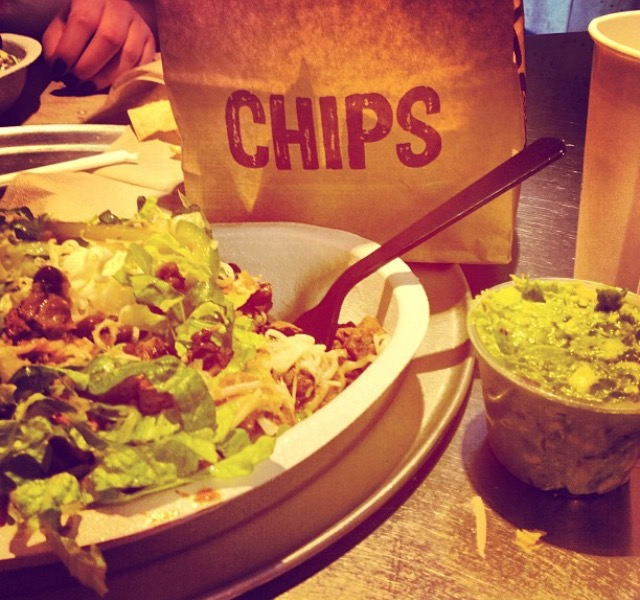The Fast-casual Dining Experience: Why Savvy Consumers (and Marketers) Are Responding
If you’re anything like me, you prefer to cook less and eat out more. You don’t like to break the bank on meals; you’d rather avoid feeling like you’re consuming an entire day’s worth of calories in one sitting; and you’d sooner not eat at all than endure a slow, inconvenient restaurant experience. Having multiple food options and dining at a socially responsible restaurant are major pluses, too.
The solution to these needs? Fast-casual dining.
Americans spent more than $21 billion at fast-casual restaurants last year, according to Euromonitor, and the sector is expected to experience double-digit growth through 2022. Compared to the restaurant industry in its entirety―which is predicted to inch up by a mere half percentage point―the fast-casual sector has emerged as “the growth engine of the U.S. restaurant industry.”
The most successful fast-casual restaurants, including Chipotle, Panera Bread, Five Guys and Shake Shack, appeal to their customers by adapting to meet evolving expectations. This means they are likely promoting fresh, organically grown ingredients, accommodating food restrictions, offering personalized food experiences and staying up-to-date with the latest food trends and technologies.
So, what marketing tactics have fast casual “winners” implemented recently that are contributing to their success, and how can your business replicate them?
Engaging Target Customers by Tying Marketing Campaigns to a Timely Theme
Chipotle recently launched an integrated marketing campaign tied to Halloween to announce that they’ve jumped on the GMO-free, antibiotic-free bandwagon. On Halloween, customers can get a salad, bowl, taco or “boo-rito” for $3 after 5 p.m. by adding an “unnecessary item” to their costumes when they come to the restaurant, symbolizing Chipotle’s stance against the use of unnecessary additives. This promotion was announced alongside a short video ad, “Unneces-scary,” which features Chipotle dressed up as a scary fast-food chain, “Cheapotle,” that serves processed food rather than cooking by hand. Proceeds up to $1 million from the Halloween fundraiser will go to Chipotle’s sustainable and healthy food foundation.
Key Takeaway: Tie your business’ marketing campaign to critical touchpoints. Using regulatory filing deadlines, news hooks and other timely events―and creatively weaving them in to deliver your core message―can help you remain relevant and foster engagement among your target audiences.
Focusing on Family and Empowering Customers to Fuel Social Good
Geared at “future foodies,” Noodles & Company recently launched a customizable kids menu, as well as a charitable platform enabling those 10 years old and under to help feed less fortunate children. The menu offers build-your-own kids meal options and features the tagline, “use your noodle, make a difference,” to empower kids. The company has pledged to donate five cents per kids meal (up to $100,000) to feed underprivileged children through its partnership with the nonprofit No Kid Hungry. The campaign highlights Noodles & Company’s wholesome brand, made-to-order food and focus on families and social good.
Key takeaway: As my colleague Kathryne Hunter discussed in a recent blog post, evidence points to Corporate Social Responsibility as a “must do” to becoming an industry leader. Making your clients feel good about using your services can help establish a reputation for leadership in responsible business.
Integrating Technologies to Enhance Customer Experiences
In April 2015, Panera unveiled Panera 2.0, rolling out a series of integrated technologies to enhance to-go and eat-in dining options. If you’ve ever been to Panera, you know the trip typically involves waiting in a moshpit to pick up your food after waiting in a separate line to order. With Panera 2.0’s new iPad kiosks, which integrate Panera’s loyalty program, the dining experience is simplified to placing an order, selecting a pager, scanning it on the kiosk, swiping a credit card and having the meal delivered directly to the table―which is track-able via a chip within the table that recognizes the pager. Panera 2.0 features additional digital ordering and payment options, as well, appealing to tech-savvy customers who crave convenience, speed and accuracy, and loathe waiting and crowding.
Key takeaway: Leverage digital and interactive tools to engage clients. Colorful and more experiential content can help attract and retain the attention of your busy customer.
How are you adapting to your target audience’s preferences to deliver marketing campaigns that will resonate?
Photo credit: Erica Stern
Connect with Alana:
Email: alana@blissintegrated.com
Twitter: @alana_gold
LinkedIn: Alana Gold
